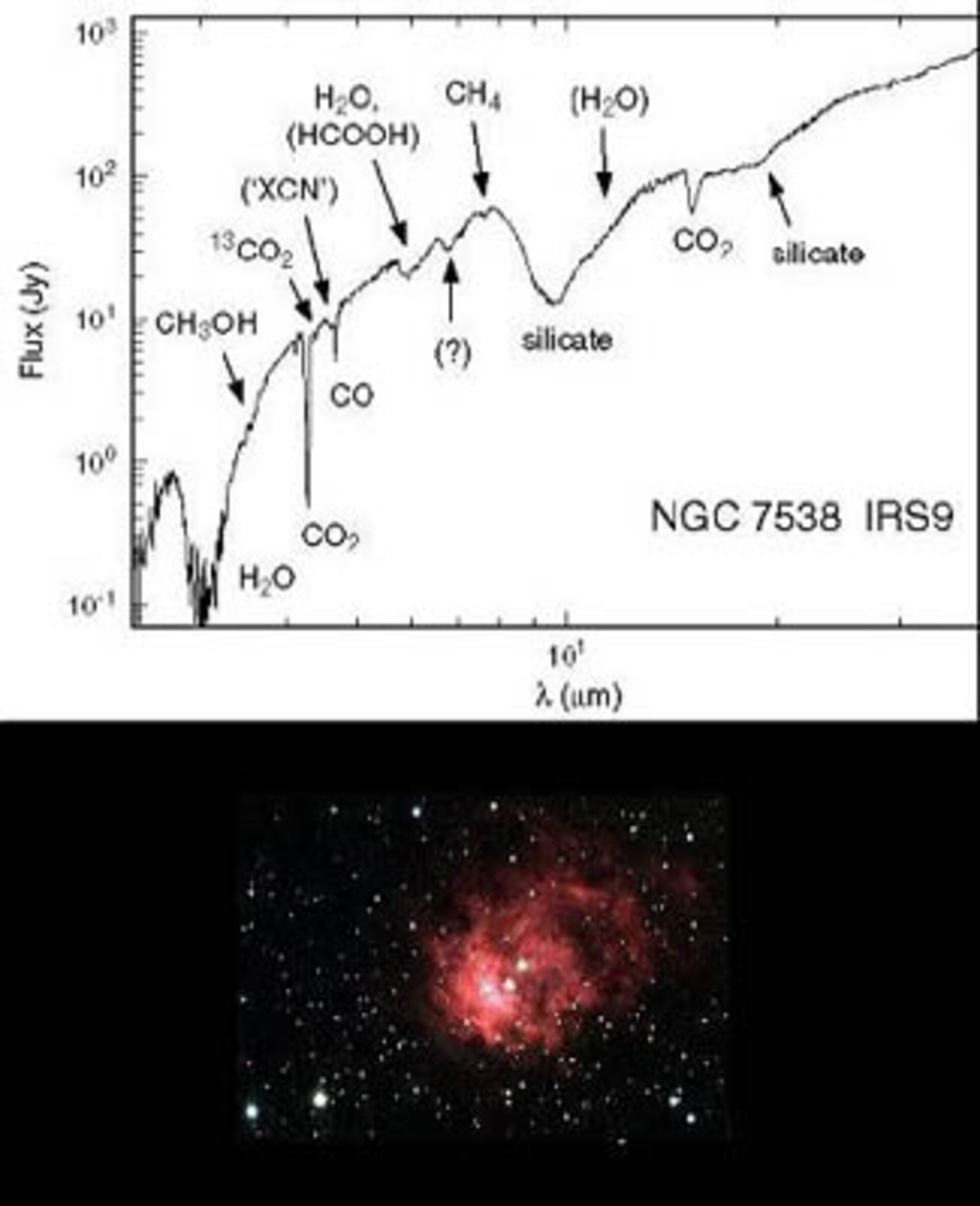Astrochemistry: the laboratory is in the stars
Astrochemistry is the study of the chemical processes taking place in space, and some recent ESA missions have made it become a really hot research field today. New missions such as Herschel are expected to contribute many discoveries, especially regarding the composition of organic molecules such as those needed for life as we know it.
Space is pervaded by many kinds of molecules, and they are constantly moving - vibrating and rotating. When they move, they emit tiny amounts of radiation that can be observed mostly with radio, submillimetre and infrared telescopes. Moreover, this radiation carries the specific 'signature' of the molecule emitting it, a fingerprint in the form of a special line that can be identified by instruments called spectrometers. In this way, astronomers can identify molecules that are even thousands of light-years away. Until about a decade ago, only radio telescopes did the search, but in 1995 ESA launched the first Infrared Space Observatory, ISO. This triggered a true revolution in astrochemistry. For example, ISO proved the existence of molecules of water in a whole variety of regions - from newborn stars till the centre of the galaxy. Also, it unveiled a much richer chemistry than what had been known before by detecting benzene for example, the 'ring molecule', which is an essential chemical step towards the synthesis of more complex organic molecules.
Now astronomers want to go a step further. They want to detect true complex organic compounds, such as molecules made up of many benzene rings and maybe even amino acids. These molecules emit far-infrared and submillimetre radiation, the kind of light that Herschel will see. Also, Herschel will be equipped with HIFI, the most sensitive instrument ever designed to identify the signature of molecules in the far-infrared and submillimetre.
As Göran Pilbratt, Herschel project scientist, says, "Herschel - and especially HIFI - will study the interstellar space with very high spectral resolution. It means that it will be able to distinguish molecules with a very high detail. And because Herschel is in space itself it will be able to see molecular radiation never studied before in the submillimetre and far-infrared. We expect to detect and study many new molecular (spectral) lines and new molecules."


